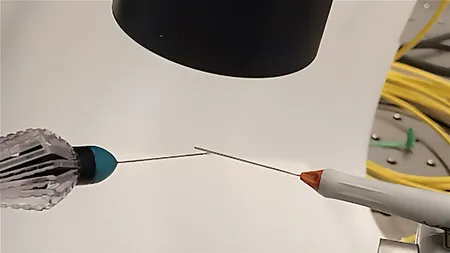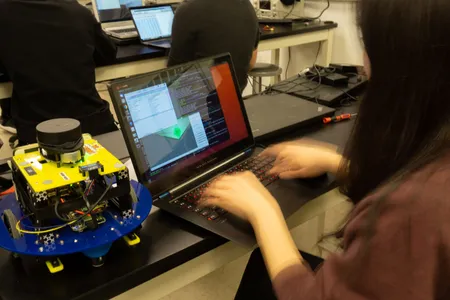☰
Work together. Create smart machines. Serve society.

Improving the frame-rate versus resolution tradeoff in optical tomography
February 13, 2025
A new machine-learning approach to enhance the efficiency and accuracy of optical coherence tomography (OCT) imaging improved framerate with no drop-off in resolution.

Bridging gaps in rural health care with AI-powered mobile clinics
February 12, 2025
General practitioners with AI help could make diagnoses, run and interpret tests, and perform procedures like specialists.

Mammal-like tails most promising for acrobatic robots
February 12, 2025
Roboticists have preferred the simplicity of lizard-like tails, but mammal-style tails may be both lighter and higher performance for turning a robot's body in space.
Get to know Michigan Robotics
Social media

Did you know Purina uses four-legged robots? Hanna Chapin (MS ROB ‘24, BSE CE ‘23) recently graduated with a master’s degree in robotics and a career already in focus through sponsored research. Chapin’s final semester and technical coursework prep...

What if higher frame rate didn't mean lower resolution? In medical imaging, this could be incredibly useful. Dr. Mark Draelos and his team were able to improve frame rate by 40% with no drop in resolution. Read: https://t.co/vC4FS2EYIR




